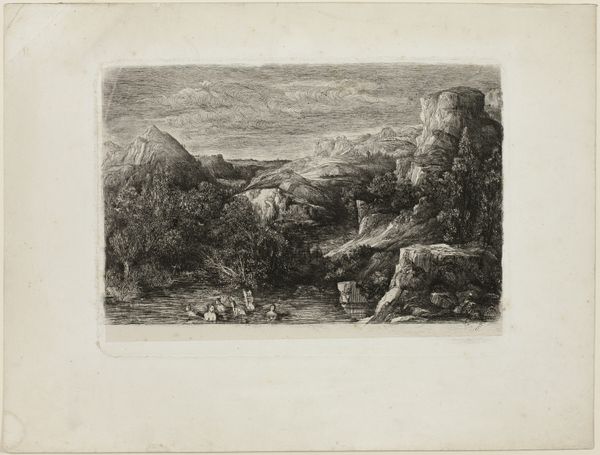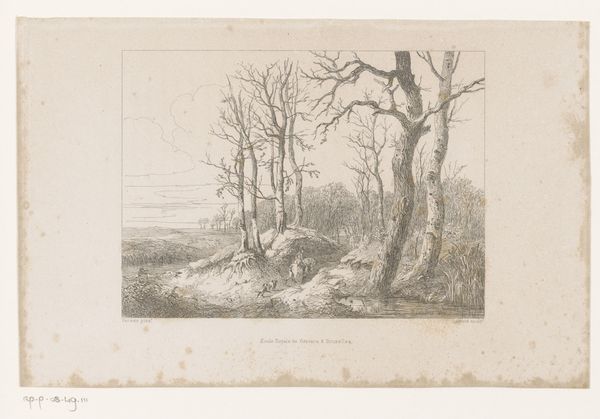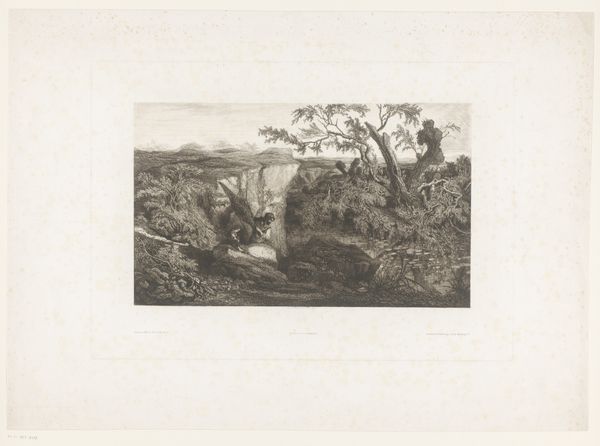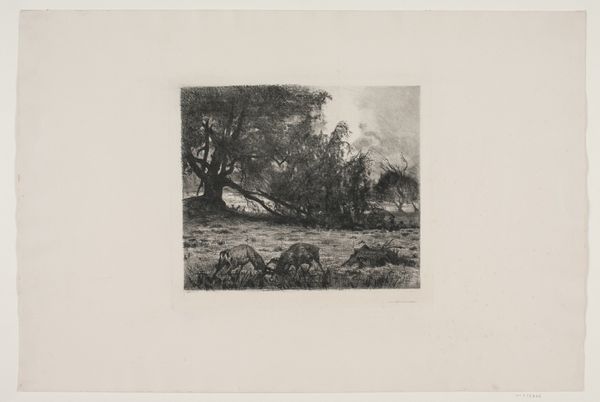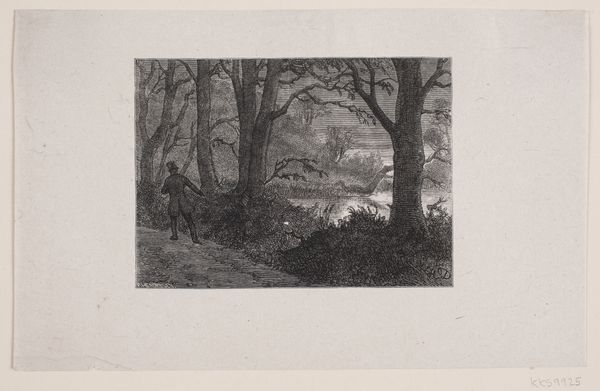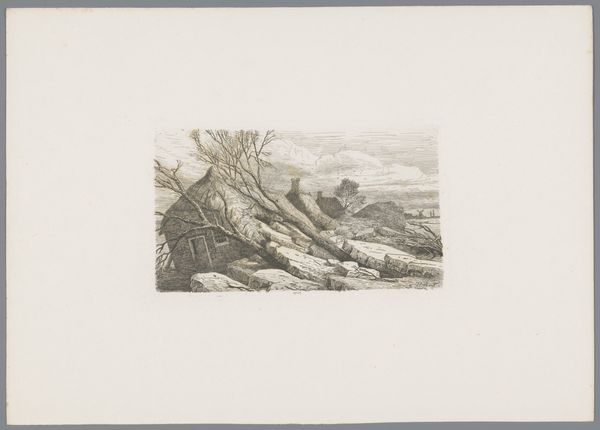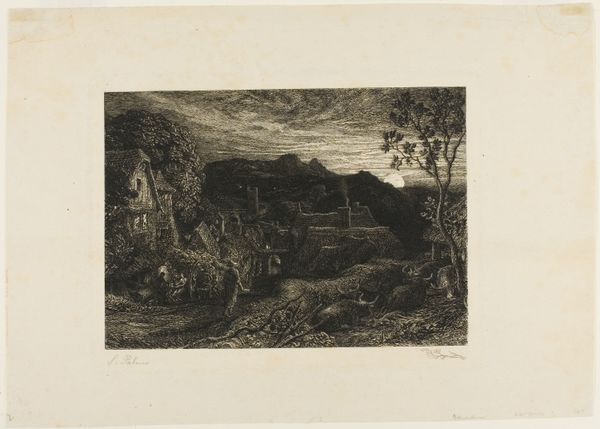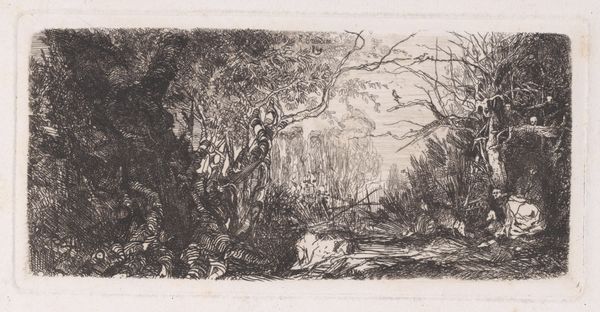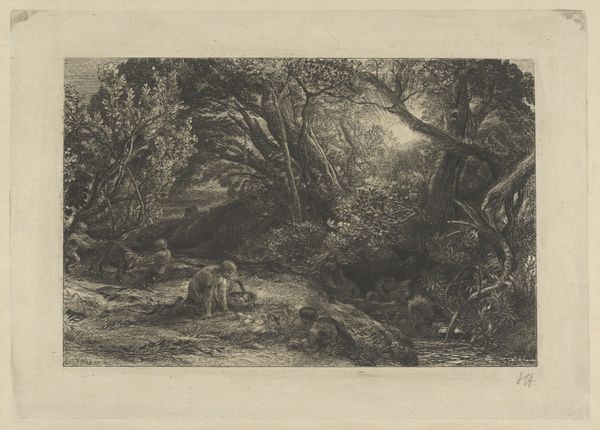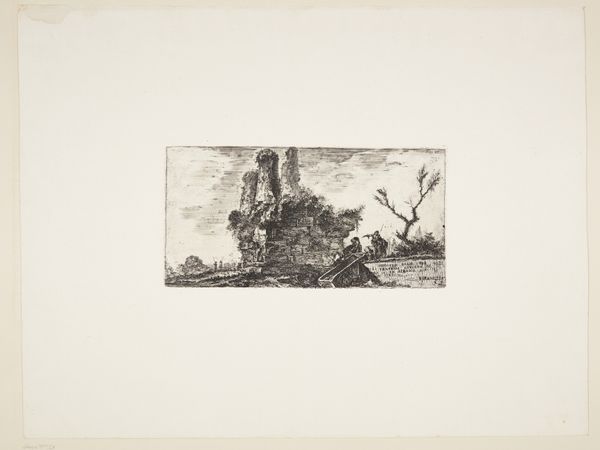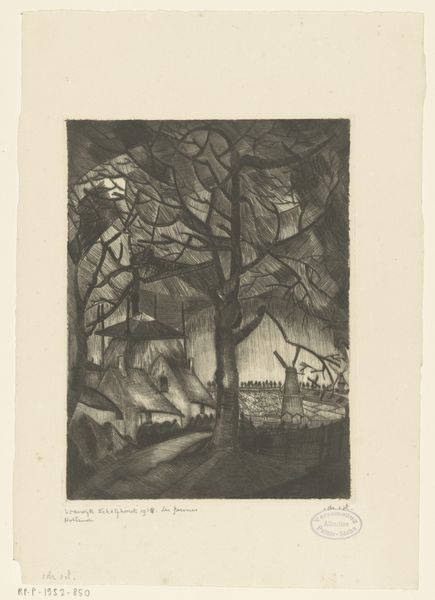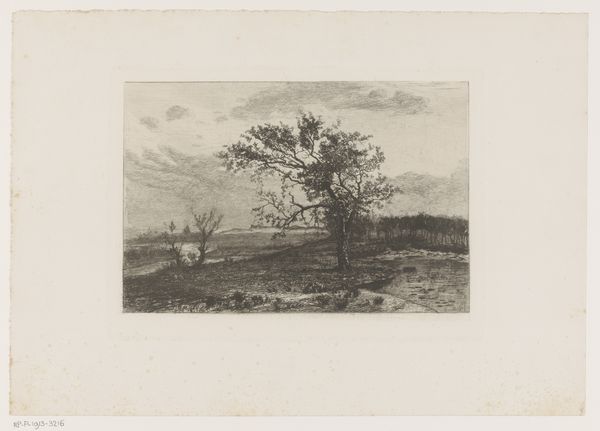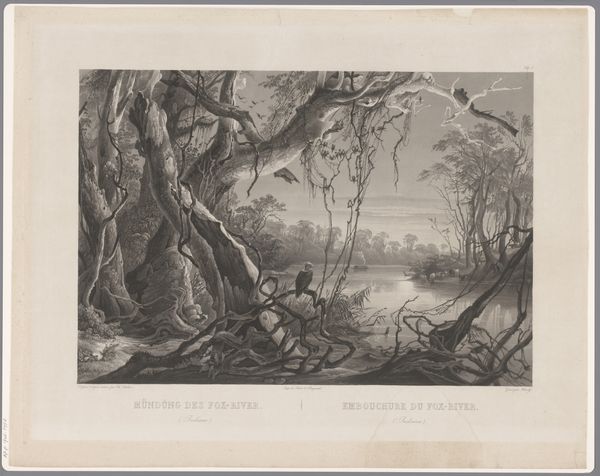
print, etching
#
animal
# print
#
etching
#
landscape
#
genre-painting
#
tonal art
#
realism
Dimensions: height 240 mm, width 320 mm
Copyright: Rijks Museum: Open Domain
Editor: This etching by Josué Dupon, "Leeuw op de loer" or "Lion on the Prowl", was created sometime between 1874 and 1909. There's a real tension here, between the detailed foreground and the hazier scene in the background. What do you make of that contrast? Curator: It's a potent image. The contrast you note draws my attention to power dynamics – both within the scene, and the societal context it hints at. The lion, representing untamed nature, observes a group of figures in the background, likely travelers. Consider the colonial era’s fascination with the "exotic" and the dangers associated with exploration. Editor: So, the lion isn’t just a lion. Curator: Precisely! How does this image perpetuate or challenge notions of dominance, of “civilization” versus the "wild"? The detailed rendering of the lion contrasts with the less distinct, almost anonymous, figures. What statement is the artist making about power structures and the gaze itself? What assumptions do we bring to this image based on our own cultural context? Editor: It does feel like the focus is less on the people and more on this... latent threat represented by the lion. Perhaps the print suggests a more critical interpretation of colonial expansion, subtly warning against the dangers of imposing upon established landscapes and communities? Curator: Exactly! And even in representing the lion, isn't there a kind of implicit commentary on humanity's place within, or even outside of, nature? It invites viewers to consider the moral implications and narratives of exploration. The choice of etching, with its detailed lines and tonal variations, further enhances that narrative. Editor: I’m starting to see how this print challenges romantic views of exploration. I wouldn’t have thought to look at it from this angle. Thanks for opening my eyes to those layers of meaning. Curator: The beauty of art lies in these layers, encouraging constant questioning and reevaluation of perspectives!
Comments
No comments
Be the first to comment and join the conversation on the ultimate creative platform.
